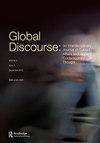The complexity of (super)complexes: Pakistan, India and West Asia
IF 1.4
Q2 INTERNATIONAL RELATIONS
引用次数: 1
Abstract
Despite areas of synergy, international relations theory has typically considered South and West Asia as analytically distinct. Following the work of Barry Buzan, whose work on regional security complexes is formative in shaping the intellectual debate, the Gulf is considered a subregion of a larger Middle Eastern regional security complex, while South Asia is regarded as its own regional security complex. This article argues that the analytical distinction between these different (sub)regional security complexes has become blurred, reflecting the emergence of a supercomplex. We contend that strong patterns of amity, enmity and securitisation that link the two regional security complexes suggest a thinning boundary between them, with the potential for them to merge. We distinguish between a supercomplex and a merger using the concepts of amity, enmity and securitisation provided by regional security complex theory. We add the English School’s ideas of order, justice and regional society to enhance our understanding. We focus on three issues in which the two regions interact: the Abraham Accords; the Iran nuclear crisis, and Jammu and Kashmir. We argue that increasing relations between the two regional security complexes have resulted in a supercomplex, with powerful states in both regional security complexes seeking to project their power into the adjacent regional security complex. We further note the strengthening patterns of amity, enmity and securitisation connecting the two regions, leading to a thinning of the boundary separating South and West Asia. We contribute to the literature on regional security complex theory by clarifying the distinction between a supercomplex and a merger through the South-West Asian case.(超级)综合体的复杂性:巴基斯坦、印度和西亚
尽管存在协同作用,但国际关系理论通常认为南亚和西亚在分析上是不同的。巴里·布赞(Barry Buzan)关于区域安全复合体的研究对形成思想界的辩论具有重要意义。在他的研究之后,海湾地区被认为是更大的中东区域安全复合体的一个分区域,而南亚则被视为自己的区域安全复合体。本文认为,这些不同(次)区域安全复合体之间的分析区别已经变得模糊,反映了一个超级复合体的出现。我们认为,连接这两个地区安全复合体的亲和、敌对和证券化的强烈模式表明,它们之间的边界正在变薄,并有可能合并。我们使用区域安全复合体理论提供的亲和、敌对和证券化概念来区分超复合体和合并。我们加入了英国学派关于秩序、正义和区域社会的思想来增进我们的理解。我们重点关注两个区域相互影响的三个问题:《亚伯拉罕协定》;伊朗核危机,查谟和克什米尔。我们认为,两个区域安全复合体之间日益密切的关系导致了一个超级复合体,两个区域安全复合体中的强国都寻求将其力量投射到邻近的区域安全复合体中。我们还注意到连接两个地区的亲和、敌对和证券化模式正在加强,导致分隔南亚和西亚的边界变薄。我们通过西南亚案例澄清了超级综合体和合并之间的区别,从而为区域安全综合体理论的文献做出了贡献。
本文章由计算机程序翻译,如有差异,请以英文原文为准。
求助全文
约1分钟内获得全文
求助全文
来源期刊

Global Discourse
Social Sciences-Political Science and International Relations
CiteScore
4.10
自引率
6.70%
发文量
64
期刊介绍:
Global Discourse is an interdisciplinary, problem-oriented journal of applied contemporary thought operating at the intersection of politics, international relations, sociology and social policy. The journal’s scope is broad, encouraging interrogation of current affairs with regard to core questions of distributive justice, wellbeing, cultural diversity, autonomy, sovereignty, security and recognition. All issues are themed and aimed at addressing pressing issues as they emerge.
 求助内容:
求助内容: 应助结果提醒方式:
应助结果提醒方式:


